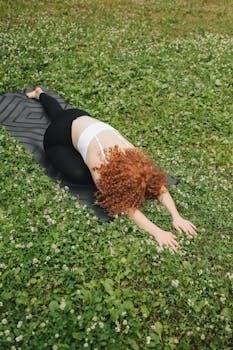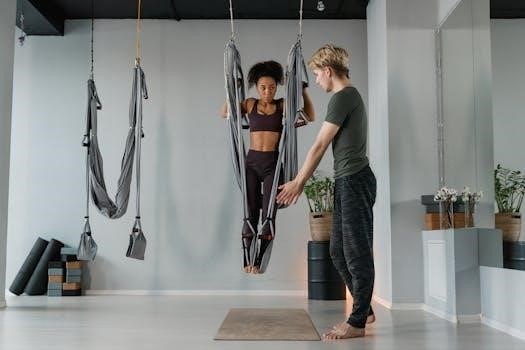Navigating the world of ear stretching requires understanding the
measurement system. Ear stretching sizes typically range from 20g (0.81mm)
to 2 (51mm) and beyond. The gauge measurement system is used in the US
which can be easily converted to both millimeters and inches for convenience.
Understanding Gauge Sizes
When embarking on the journey of ear stretching‚ grasping the concept of
gauge sizes is paramount. The gauge system‚ often abbreviated as “g” or “ga‚”
is the standard unit of measurement for ear stretching jewelry. However‚
it’s important to note that the gauge system operates inversely⁚ the smaller
the gauge number‚ the larger the diameter of the jewelry.
For instance‚ a 20g piercing is significantly smaller than a 2g piercing.
This can be initially confusing‚ but with practice‚ it becomes second nature.
Standard ear piercings are typically performed at either 20g or 18g‚
corresponding to approximately 0.81mm and 1mm‚ respectively. These sizes
serve as the starting point for many individuals who wish to begin
stretching their earlobes.
As you progress through the stretching process‚ you’ll encounter a range of
gauge sizes‚ each with its corresponding millimeter equivalent. It’s crucial
to familiarize yourself with these conversions to ensure accurate jewelry
selection and a safe stretching experience. Consulting a gauge size chart can
be immensely helpful in this regard.
Gauge to Millimeter Conversion Chart
A gauge to millimeter conversion chart is an indispensable tool for anyone
involved in ear stretching. This chart provides a direct comparison between
gauge sizes and their corresponding millimeter measurements‚ ensuring
accurate jewelry selection and a smooth stretching process. Due to the
inverse nature of the gauge system‚ relying solely on gauge numbers can be
confusing. The conversion chart eliminates this ambiguity by providing the
precise diameter of each gauge size in millimeters.
For example‚ a 12g ear stretching size is equal to 2mm‚ 10g is 2.4mm‚ 8g is
3mm‚ and 6g is 4mm. These conversions are crucial when selecting tapers and
plugs for stretching. The chart typically lists gauge sizes ranging from the
smallest (e.g.‚ 20g or 18g) to larger sizes (e.g.‚ 00g or beyond)‚ along
with their millimeter equivalents. Some charts also include inch
conversions for added convenience.
Having access to a reliable gauge to millimeter conversion chart minimizes
errors and ensures a safer‚ more comfortable ear stretching journey.
Initial Piercing Size
The initial piercing size plays a crucial role in the ear stretching journey‚
setting the foundation for future modifications. Standard ear piercings are
typically performed at either 20g (0.8mm) or 18g (1mm). These sizes are
common for traditional earrings and provide a starting point for those
interested in stretching their earlobes. It’s important to understand that
the initial piercing size will dictate the first steps in the stretching
process.
Starting with a smaller gauge allows the earlobe to heal properly and
provides more flexibility when gradually increasing the size. Many
individuals choose to stretch from the initial piercing size to the next
larger gauge‚ which is typically either 16g (1.2mm) or 14g (1.6mm). This
first stretch is often the easiest‚ as the tissue is already pierced and
relatively elastic.
Choosing the right initial piercing size is essential for a comfortable and
successful ear stretching experience. Consulting with a professional piercer
can help determine the most suitable gauge for your earlobes and provide
guidance on the initial steps of the stretching process.
Recommended Starting Gauge for Stretching
Determining the recommended starting gauge for stretching is crucial for a
safe and successful ear modification journey. While initial piercings are
often done at 20g or 18g‚ the recommended starting gauge for stretching
typically ranges from 14g (1.6mm) to 16g (1.2mm). This allows for a gradual
and controlled increase in size‚ minimizing the risk of complications;

If you already have standard ear piercings‚ you can measure the gauge size
you are currently using with a caliper tool. This will accurately determine
the diameter in millimeters‚ helping you identify the appropriate starting
point for your stretching journey. Alternatively‚ consulting a professional
piercer is highly recommended. They can accurately measure your existing
piercings and provide personalized guidance based on your earlobe’s
anatomy and elasticity.

Starting with a slightly larger gauge than your initial piercing allows for a
more comfortable and controlled stretch. It’s essential to prioritize the
health of your earlobes throughout the stretching process.
Safe Stretching Timeline
Establishing a safe stretching timeline is paramount to preserving tissue
elasticity and minimizing the risk of complications like tears or blowouts.
Patience and gradual progression are key principles in responsible ear
stretching. Individual experiences may vary due to differences in earlobe
elasticity‚ but adhering to a general timeline can significantly improve
outcomes.
For smaller sizes (up to 2mm)‚ allowing at least one to two months between
stretches is generally advised. As you progress to larger sizes‚ extending
the waiting period becomes increasingly important. For sizes between 2mm and
6mm‚ waiting two to three months between stretches is recommended. For sizes
larger than 6mm‚ it’s best to wait at least three to six months‚ or even
longer‚ between stretches.
Rushing the process can lead to micro-tears in the dermis layer of the ear‚
weakening the tissue structure and increasing the likelihood of complications.
Listening to your body is crucial. If you experience any pain‚ discomfort‚ or
bleeding‚ it’s a clear sign that it’s too soon to stretch further.
Materials for Stretching
Selecting appropriate materials for ear stretching is crucial for a safe and
comfortable experience. The materials used come into direct contact with the
piercing‚ so choosing biocompatible options is essential to minimize the risk
of allergic reactions‚ irritation‚ and infection.
Surgical stainless steel is a popular choice due to its durability‚ ease
of sterilization‚ and relatively low cost. However‚ some individuals may
still experience sensitivity to nickel‚ which is present in small amounts in

some stainless steel alloys. Titanium is an excellent alternative‚
being hypoallergenic‚ lightweight‚ and highly resistant to corrosion. It is
suitable for individuals with sensitive skin or metal allergies.
Glass is another commonly used material for stretching jewelry. It is
non-porous‚ smooth‚ and easy to clean. Glass plugs and tunnels are available
in a variety of colors and designs; Organic materials such as wood‚
bone‚ and horn can also be used for stretching‚ but they require more

maintenance and are not suitable for initial stretches due to their porous
nature.
Tapers are essential tools for stretching‚ and they should be made of
high-quality materials like stainless steel or glass.
Caring for Stretched Ears
Proper aftercare is vital for maintaining healthy and happy stretched ears.
Regular cleaning helps prevent infection and promotes healing‚ especially
after a fresh stretch. A saline solution‚ made by dissolving non-iodized sea
salt in warm water‚ is recommended for daily cleaning. Submerge the stretched
lobe in the solution or use a cotton ball to gently cleanse the area‚ removing
any crust or debris.
Massaging the lobes with a natural oil‚ such as jojoba‚ vitamin E‚ or coconut
oil‚ can help improve circulation‚ increase elasticity‚ and prevent dryness.
Regular oil massages keep the ear lobes healthy and supple.
It’s essential to downsize jewelry if you experience any signs of irritation‚
such as redness‚ swelling‚ pain‚ or discharge. Wearing jewelry that is too
tight can restrict blood flow and lead to complications. Opt for jewelry made
of hypoallergenic materials like surgical stainless steel or titanium to
minimize the risk of allergic reactions.
Avoid harsh soaps‚ perfumes‚ and other irritants that can disrupt the
delicate balance of the skin.
Potential Complications
While ear stretching can be a rewarding form of body modification‚ it’s
essential to be aware of potential complications. One common issue is a
“blowout‚” which occurs when the skin tears or everts due to stretching too
quickly. Blowouts can be painful and require downsizing and proper care to
heal.
Infections are another risk‚ particularly if proper hygiene is not maintained.
Symptoms of infection include redness‚ swelling‚ pain‚ discharge‚ and
warmth. If an infection occurs‚ it’s crucial to seek medical attention.
Thinning of the lobes can also occur‚ making the tissue more susceptible to
tears and blowouts. Slow and gradual stretching is essential to prevent
thinning. Scar tissue buildup can also be a concern.
Allergic reactions to certain jewelry materials‚ such as nickel‚ can cause
irritation and inflammation. Choosing hypoallergenic materials can minimize
this risk. Keloids‚ raised scars‚ can develop in some individuals‚ although
they are relatively uncommon in ear stretching.
Adhering to safe stretching practices‚ maintaining proper hygiene‚ and
promptly addressing any issues that arise can significantly reduce the risk
of complications.
Reversibility of Stretched Ears
One of the most common questions surrounding ear stretching is whether the
process is reversible. The extent to which stretched ears can return to
their original size depends on several factors‚ including the size of the
stretch‚ the duration of the stretch‚ and the individual’s skin elasticity.
Generally‚ smaller gauges (around 2g to 0g) have a higher likelihood of
shrinking back to a relatively normal size after the jewelry is removed.
However‚ complete closure may not always be possible‚ and a small hole or
scar may remain. Larger gauges (00g and above) are less likely to fully
close on their own.
If you’re considering stretching your ears‚ it’s essential to think about
the potential for reversibility. If you’re unsure whether you’ll want to
keep your stretched ears permanently‚ it’s best to stay within the smaller
gauge range. For those with larger stretches who desire closure‚ surgical
options are available to repair and reconstruct the earlobes.
Ultimately‚ the decision to stretch your ears is a personal one. Understanding
the potential for reversibility can help you make an informed choice.

No Responses